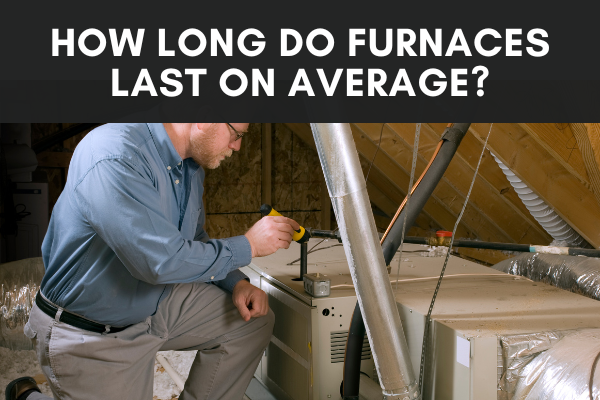Furnaces work to generate and disperse hot air throughout homes, businesses, and industrial plants. They enable us to survive day-to-day activities during harsh winters and continue production no matter what climate we live in.
Furnaces have a standard lifespan of 15-20 years, depending on what kind of furnace it is, your use, and its maintenance (or lack thereof).
Read below about the different types of furnaces, their functions, how long they last, and how you can extend your furnace’s lifespan.
Different Furnaces and Their Lifespans
There are four types of furnaces that are most commonly used in the U.S. – gas, oil, electric, and propane.
Here are their average lifespans:
- Natural gas furnaces: 18 years
- Oil furnaces: up to 25 years
- Electric furnaces: 20-30 years
- Propane furnaces: 15-20 years
Natural gas furnaces give you a good bang for your buck and are the most popular furnace types for residential homes in the U.S. While older gas furnaces may not have been efficient, newer models have increased efficiency to almost 100%.
You can save about a quarter of the price by purchasing an oil furnace instead of a natural gas one; however, fuel prices will be higher for oil. While they are more economical upfront, oil furnaces also have a slightly lower efficiency rate than natural gas.
Electric furnaces are the cheapest furnace option of all. They are installed fairly easily and last longer than the average oil or natural gas furnace. Unfortunately, their lower upfront cost evens out because they will generously increase your electric utility bill.
Propane furnaces are used by roughly 10% of U.S. homes. If oil and gas aren’t accessible in your area, propane is the next best thing.
There is also waste oil, dual-fuel, wood-burning, and industrial furnaces which may have slightly different lifespans and uses.
Increasing Your Furnace’s Lifespan
The general lifespan of your furnace will be determined by a few factors; first and foremost, your use and the furnace’s maintenance, as well as its sizing and installation.
Furnace Use
There’s nothing wrong with cranking up the heat to withstand those long, cold winters. If you live somewhere that is cold year-round, you’re going to be using your furnace even more.
Increased use usually means your furnace will only last the average lifespan dictated by the manufacturers. With adequate maintenance, you shouldn’t experience too many problems in the meantime.
After about ten years of intense usage or less time without maintenance, however, you may start to notice some issues with your furnace, such as:
- Poor air quality
- More noise
- Blowing cold air/malfunctioning
- Repetitive issues
- Higher monthly energy bills that appear suddenly
These are signs that your furnace may be nearing its end.
Furnace Maintenance
As mentioned, maintenance is key if you want to expand your furnace’s lifespan. Have a professional come in every 1-2 years to change out any filters and make sure everything is in working order. The better you take care of your furnace, the better it takes care of you. This periodic maintenance is often referred to as an HVAC system tune-up or Furnace Tune-Up.
How Long Does a Furnace Tune-Up Take?
A furnace tune-up should take less than two hours in most cases. The HVAC tech will start by running the system and checking the operating temperatures. They will inspect other electrical and mechanical components to ensure proper function. These will include the burner element and the flame output. Cleaning of components is also part of the tune-up process. Old or dirty filters may be replaced, a noisy fan motor may get some lubrication, and much more.
Additionally, an air-flow assessment of the ducting system may be included.
Furnace Sizing
Furnaces are usually measured in BTUs, and it’s important to have enough to heat the size of your home. You should consider your square footage, ceiling height, and the size and condition of your windows.
Get a furnace too small and it will have to work overtime to heat your house, potentially causing breakdowns. Get one too big and your bill may be double what it could have been.
Scheduling a consultation with an HVAC tech can help provide clarity on what size furnace would be the most efficient for your home.
Furnace Installation
Make sure your furnace is installed by a professional. This is the best way to avoid any kinks or issues down the line and help expand your furnace’s lifespan.
To read this article in Spanish, click here.

